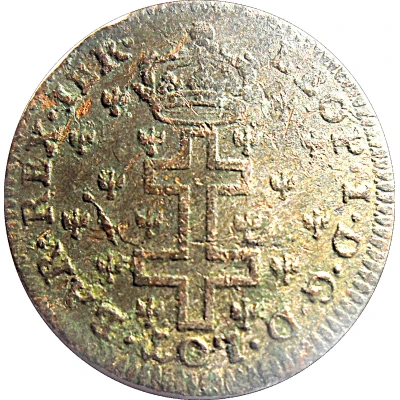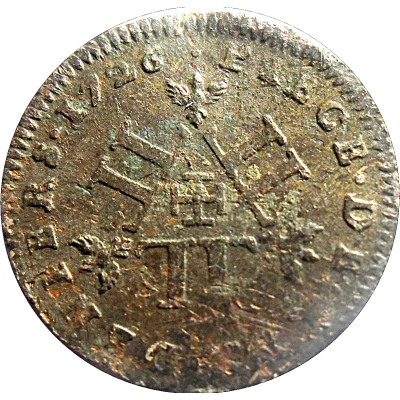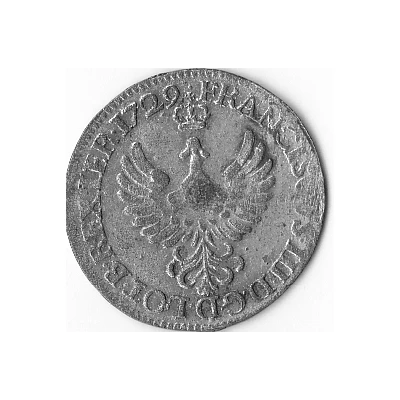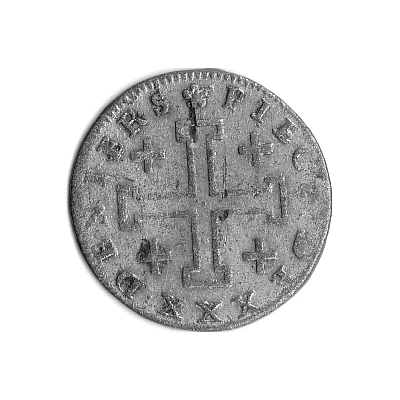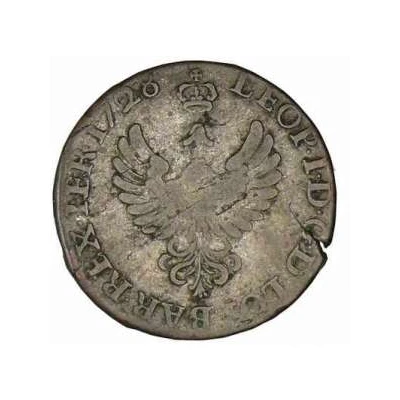
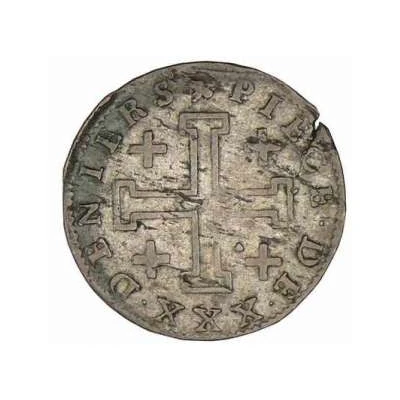

30 Deniers - Leopold I Cross of Jerusalem
| Billon (.166 silver) | 2.2 g | 22.5 mm |
| Issuer | Duchy of Lorraine (French States) |
|---|---|
| Duke | Leopold (1697-1729) |
| Type | Standard circulation coin |
| Years | 1728-1729 |
| Value | 30 Deniers (⅛) |
| Currency | Pound of Lorraine (1700-1737) |
| Composition | Billon (.166 silver) |
| Weight | 2.2 g |
| Diameter | 22.5 mm |
| Shape | Round (irregular) |
| Orientation | Coin alignment ↑↓ |
| Demonetized | Yes |
| Updated | 2024-10-04 |
| Numista | N#28839 |
|---|---|
| Rarity index | 71% |
Reverse
Cross of Jerusalem with a small crosses in each angle.
Script: Latin
Lettering: PIECE DE XXX DENIERS
Translation: Coin of 30 Deniers.
Edge
Plain
Comment
Leopold I is the son of Charles V (1642-1690), a lackland duke. Unlike his father, he managed taking back his Duchy after the Ryswick treatees signed on October 30th, 1697. The following year he spoused Charlotte of Orleans, niece of Louis XIV of France, making Leopold I torn in two, between his 2 families: in one side, the French reigning family of his wife, and in the other side, his own family, whose uncle and cousins ruled over the Archiduchy of Austria and as Holy Roman Emperors.This coin denomination is written in French, proof of the growing influence of the Kingdom of France over Lorraine.
Even Lorraine was simply a Duchy, the Duke Leopold Ier wore the title of King on his coins, claiming himself heir of Godefroy de Bouillon, former King of Jerusalem. This also explains the use of a Cross of Jerusalem on the reverse.
Interesting fact
The 30 Deniers coin featuring Leopold I (Cross of Jerusalem) from the Duchy of Lorraine (French States) is notable for its unique design. The obverse side of the coin features an image of Leopold I, while the reverse side features a cross of Jerusalem, which was a symbol of the Crusades. This design was used to commemorate the victory of the Holy Roman Empire over the Ottoman Empire in the Battle of Belgrade in 1717. The use of the cross of Jerusalem on the coin was meant to represent the triumph of Christianity over Islam.
